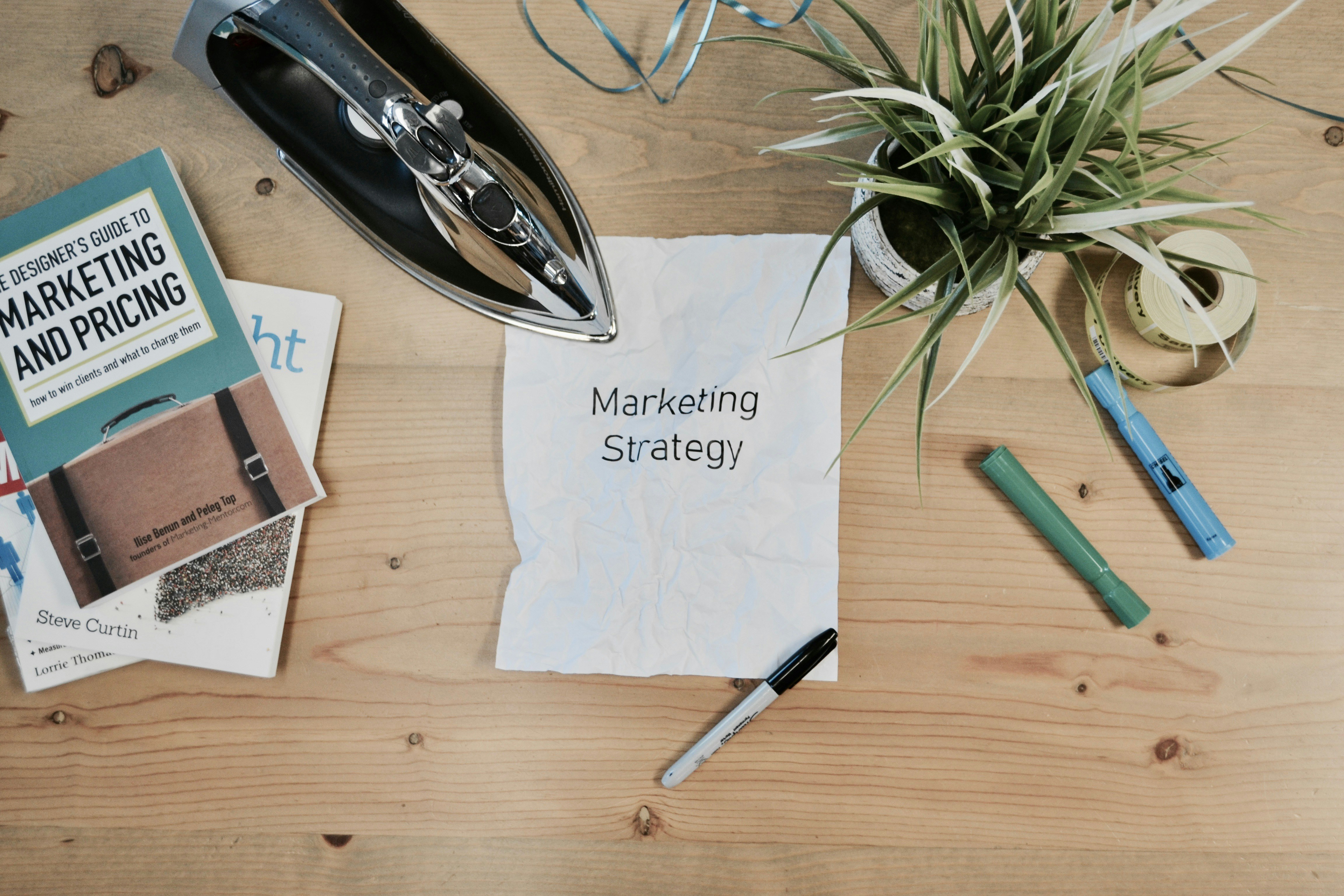Today, I’m taking you behind the curtain to explore the fascinating world of email marketing within the realms of art, sewing, crafts, and writing. It’s a journey through the carefully curated strategies that have transformed how creators and bloggers in these niches connect with their audience, build a loyal following, and ultimately drive their projects and sales forward. This blog post shares the secrets that have propelled email marketing to become a cornerstone in the promotion toolkit of successful bloggers and creators, offering insights that might just change the game for you too.

Understanding the Basics of Email Marketing
Email marketing, to me, has always seemed like a dance between science and art. I’ve learned that it’s not just about sending out emails but about understanding the people on the other end of the message. To kick things off right, there are a few basics I had to get a grip on.
Identifying your target audience
Understanding who I’m talking to has been crucial. My blog focuses on art, crafts, sewing, and writing, so my audience largely comprises creatives and hobbyists looking for inspiration or tips. Acknowledging this helped me tailor my content and tone to speak directly to their interests and needs.
Choosing the right email marketing platform
After identifying my audience, the next step was choosing an email marketing platform that fits my needs. There are several out there, but I looked for one that offered templates, automation, and analytics. This way, I could design beautiful emails, schedule them, and then see how well they’re doing.
Setting smart goals for your email campaign
I quickly learned the importance of setting SMART goals (Specific, Measurable, Achievable, Relevant, Time-bound) for my campaigns. Whether it was growing my subscriber list by a certain percentage or increasing traffic to my blog, having clear goals allowed me to focus my efforts and measure my success accurately.
Creating an effective email list
Building an email list wasn’t about gathering as many emails as possible, but about attracting subscribers genuinely interested in what I have to offer. I used opt-in forms on my blog and social media channels, offering free resources as incentives, which helped me create a list of engaged subscribers.
The Importance of Personalizing Emails
Personalizing emails has been a game changer for me. It turned my messages from cold, impersonal broadcasts into warm conversations.
Why personalization matters
Personalization helps my emails stand out in a crowded inbox. It makes my subscribers feel recognized and valued, leading to higher engagement rates. Showing that I know who my subscribers are, from their name to their specific interests, has made a significant difference.
How to segment your audience for improved personalisation
Segmenting my email list has allowed me to tailor my messages even further. I categorize my subscribers based on their interests – be it art, crafts, sewing, or writing – and their interaction with my emails. This way, I can send them content that’s relevant and engaging, improving my overall personalization strategy.
Examples of successful personalized email campaigns in the arts and crafts niche
One successful campaign I ran involved sending targeted emails to subscribers interested in sewing tutorials. I included personalized recommendations based on their past interactions with my blog. The response was overwhelming, with a noticeable increase in engagement and positive feedback on how relevant and timely the information was.

Leveraging Content Marketing in Your Emails
Content marketing through emails has been an integral part of my strategy, enabling me to nurture my relationship with my subscribers by providing value.
What is content marketing and why it is essential in your email campaigns
Content marketing is all about offering valuable and relevant content to your audience. In my email campaigns, it’s essential because it helps me establish authority, build trust, and keep my subscribers engaged and informed.
Tips on creating high-quality content for your emails
Creating high-quality content starts with knowing my audience. I focus on topics that resonate with them, employing a conversational tone to make my emails feel like a chat between friends. I also make sure to include visuals and ensure the content is digestible and action-oriented, giving them clear takeaways or next steps.
Utilizing email newsletters to share your blog content
My email newsletter has been a fantastic tool for sharing my blog content. I often include excerpts from recent posts or highlight my most popular content, driving traffic back to my blog. It’s a win-win, as my subscribers get valuable content delivered straight to their inbox, and I get increased engagement on my blog.
Creating Eye-catching Email Designs
The design of my emails plays a big role in capturing and maintaining the attention of my subscribers.
Why your email design matters
A well-designed email is not just about aesthetics; it’s about user experience. A visually appealing email can help improve readability, ensure important information stands out, and reflect the brand’s personality, all of which contribute to higher engagement rates.
Choosing the right template for your email
When selecting a template for my emails, I look for simplicity and flexibility. A clean layout that’s easy to navigate helps keep the focus on the content, while the ability to customize elements like fonts and colors allows me to infuse my brand’s identity.
Best practices for crafting visually appealing emails
One best practice I follow is maintaining a balance between text and visuals. Too much text can be overwhelming, while too many images can distract from the message. I also make sure my emails are clutter-free and use brand colors to reinforce recognition.

Crafting Compelling Email Subject Lines
The subject line is my first, and sometimes only, chance to make an impression on my subscribers.
The role of a good subject line in email marketing
A compelling subject line can mean the difference between my email being opened or ignored. It acts as a gatekeeper, enticing subscribers with a promise of value if they choose to read further.
Do’s and Don’ts in writing email subject lines
In writing subject lines, I DO keep them short and intriguing, making use of personalization when possible. I DON’T use clickbait or overly salesy language, as it can lead to disappointment and mistrust.
Example of compelling subject lines for your art or craft blog
For my art blog, a subject line like “Unlock Your Creativity: 5 Unconventional Art Techniques” has worked wonders. It promises value (unlocking creativity) and piques curiosity with the mention of unconventional techniques, leading to high open rates.
Ensuring Mobile Friendliness in Your Emails
With most people reading emails on their mobile devices, mobile optimization can’t be ignored.
The importance of mobile optimization for emails
Mobile friendliness is vital because it affects the readability and interactability of my emails. If an email doesn’t display correctly on a mobile device, subscribers are likely to delete it or unsubscribe.
How to design mobile-friendly emails
To design mobile-friendly emails, I use responsive templates that automatically adjust to fit the screen size of the device. I also keep my content concise and ensure my call-to-action (CTA) buttons are easily clickable.
Testing your emails on different devices
Before sending out an email, I always test it on various devices and email clients. This helps me catch and fix any issues that could affect the mobile user experience, ensuring my emails look great no matter where they’re viewed.

The Cruciality of Performing A/B Testing in Your Emails
A/B testing has been indispensable for understanding what resonates with my audience.
Why A/B testing is crucial for your email marketing
A/B testing allows me to compare two versions of my email to see which one performs better. This data-driven approach helps me optimize my emails for better results, whether it’s tweaking the design, content, or subject lines.
Best practices in performing A/B testing
Best practices include testing one element at a time (like subject lines or CTA buttons) to clearly understand what’s making the difference. Keeping the test group sizes equal and ensuring the testing period is the same for both versions are also important for accuracy.
Understanding and analyzing the results of A/B testing
Analyzing the results involves looking beyond just open rates and click-through rates. I consider the context, such as the time of day the email was sent and the overall engagement level. This comprehensive analysis helps inform my future email strategies.
Maintaining and Cleaning-up Your Email Lists
An updated and clean email list is essential for the health of my email marketing campaigns.
Why maintaining an updated email list is essential
Maintaining an updated email list ensures that I’m sending emails to subscribers who are genuinely interested in what I have to share. It improves deliverability and engagement rates, as my emails are less likely to be marked as spam.
Effective strategies in cleaning up your email list
I regularly remove inactive subscribers and those who have opted out. I also use segmentation to re-engage subscribers who haven’t interacted with my emails in a while, possibly with a special offer or a reminder of what they’re missing out on.
The role of an email list in a successful email campaign
A clean and engaged email list is the backbone of a successful campaign. It means I’m reaching the right people with my content, leading to higher engagement, more traffic to my blog, and ultimately, a stronger connection with my audience.
Implementing a Follow-up Strategy and Retention Emails
A solid follow-up strategy and crafting effective retention emails have been essential for keeping my subscribers engaged over time.
The significance of a reliable follow-up strategy
A follow-up strategy helps me stay in touch with my subscribers after they’ve taken a specific action, like signing up or making a purchase. It’s an opportunity to thank them, offer additional value, and keep the conversation going.
Strategies in crafting effective retention emails
For retention emails, I focus on personalization and value. This could mean sending exclusive content, special offers, or updates about my blog that they wouldn’t want to miss. The goal is to remind them why they subscribed in the first place and encourage them to stay engaged.
Understanding why customer retention is key for long-term success
Retention is key because it’s more cost-effective to retain an existing subscriber than to acquire a new one. Loyal subscribers are also more likely to become advocates for my brand, recommending my blog to others and thus helping me grow my audience organically.
Measuring the Success of Your Email Marketing Campaign
To continuously improve, I’ve learned the importance of measuring the success of my email marketing campaigns.
How to determine the success of your email campaign
Success isn’t just about open rates or click-through rates, though those are important metrics. I also look at the conversion rate, which tells me how many subscribers took the desired action, and the overall ROI of the campaign.
Understanding key email marketing metrics
Key metrics include open rate, click-through rate, conversion rate, unsubscribe rate, and bounce rate. Each of these metrics offers insight into how well my emails are performing and where there’s room for improvement.
Improving your email campaigns based on metrics and feedback
Based on these metrics and direct feedback from my subscribers, I continuously tweak and test different elements of my emails. Whether it’s trying new subject lines, adjusting the design, or refining the content, it’s all about improving engagement and achieving better results over time.
By understanding and applying these principles, I’ve seen tangible growth in the engagement and effectiveness of my email marketing efforts. It’s a constant learning process, but one that’s incredibly rewarding as I connect with my community and see my blog flourish.



